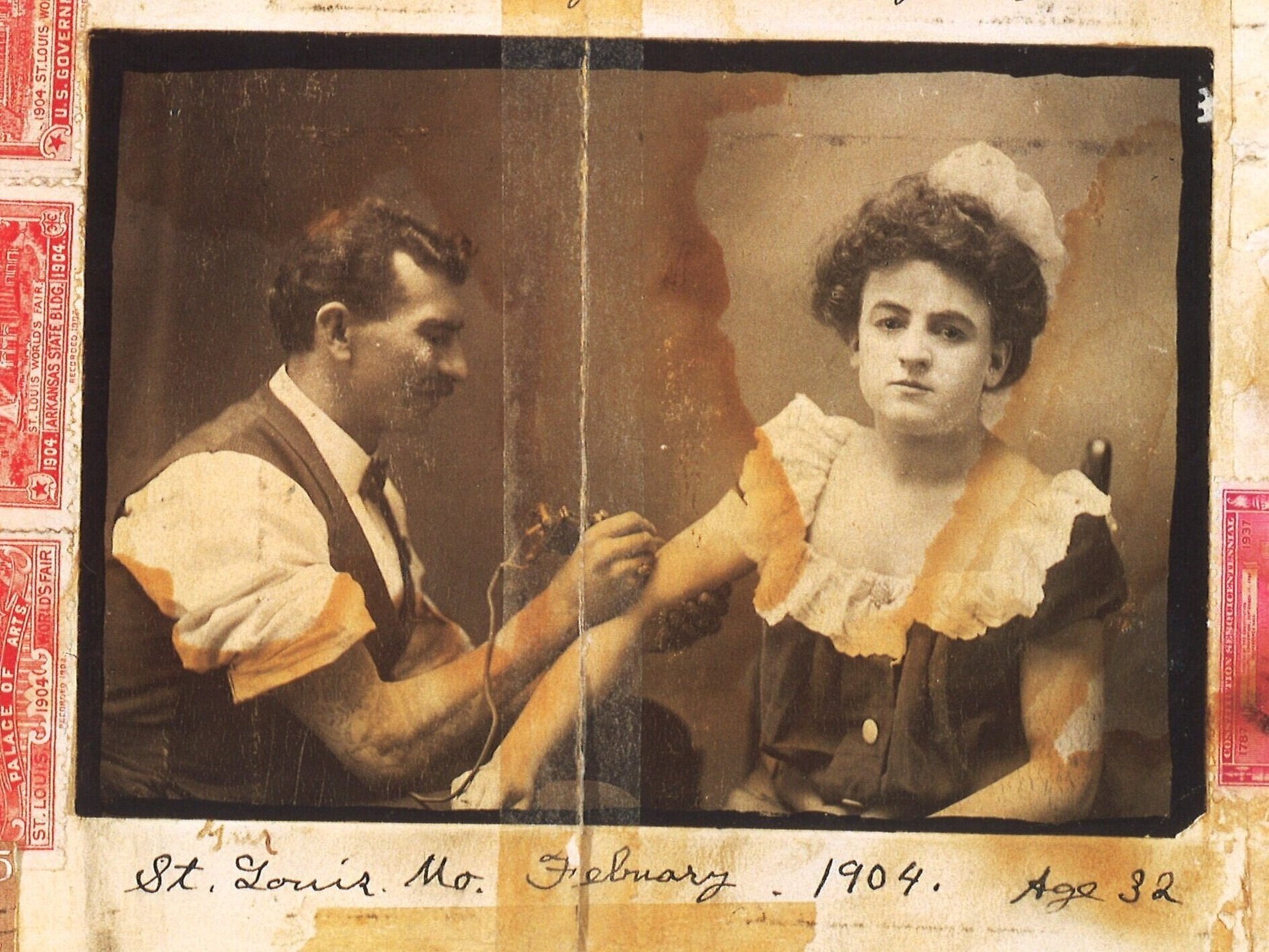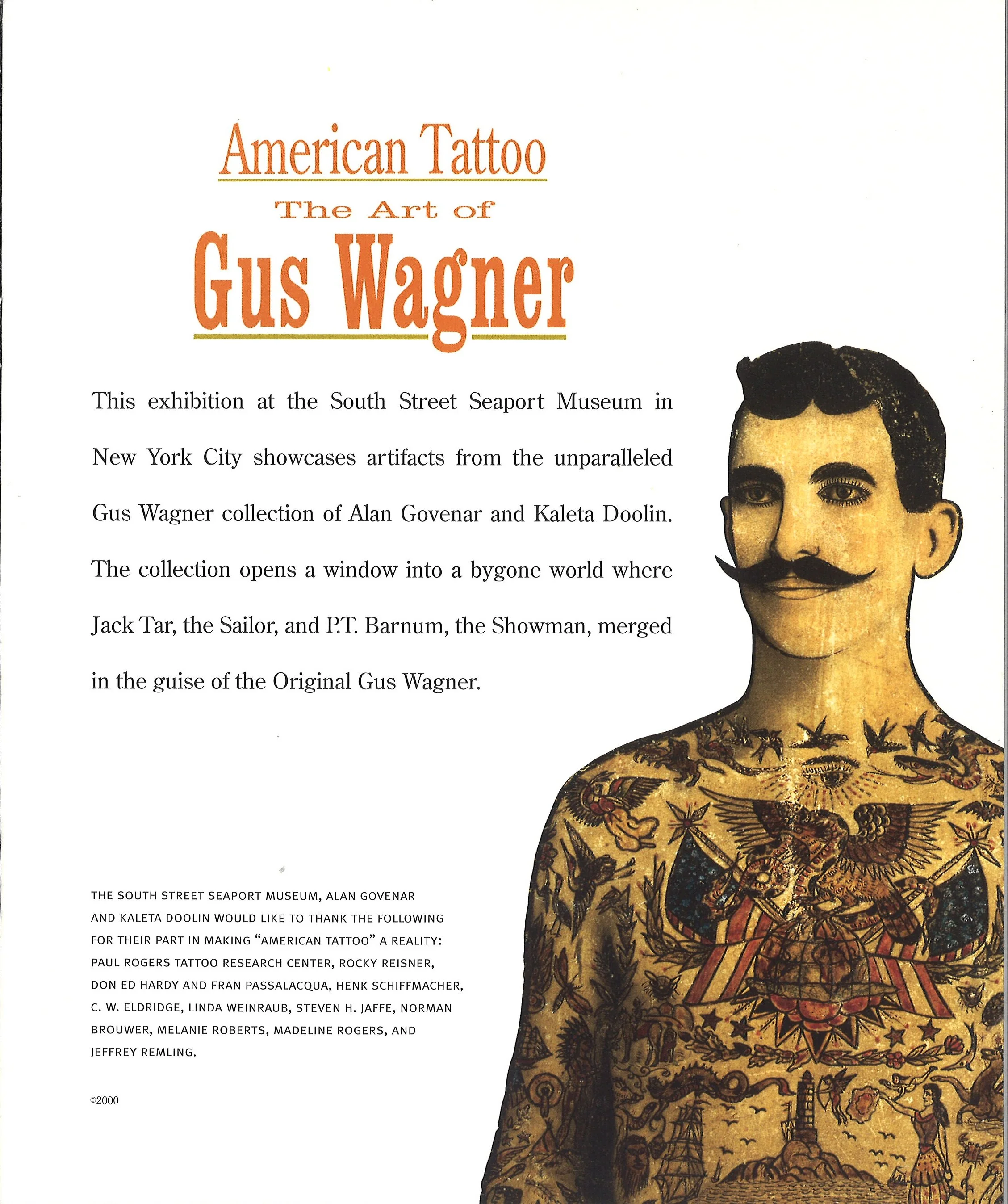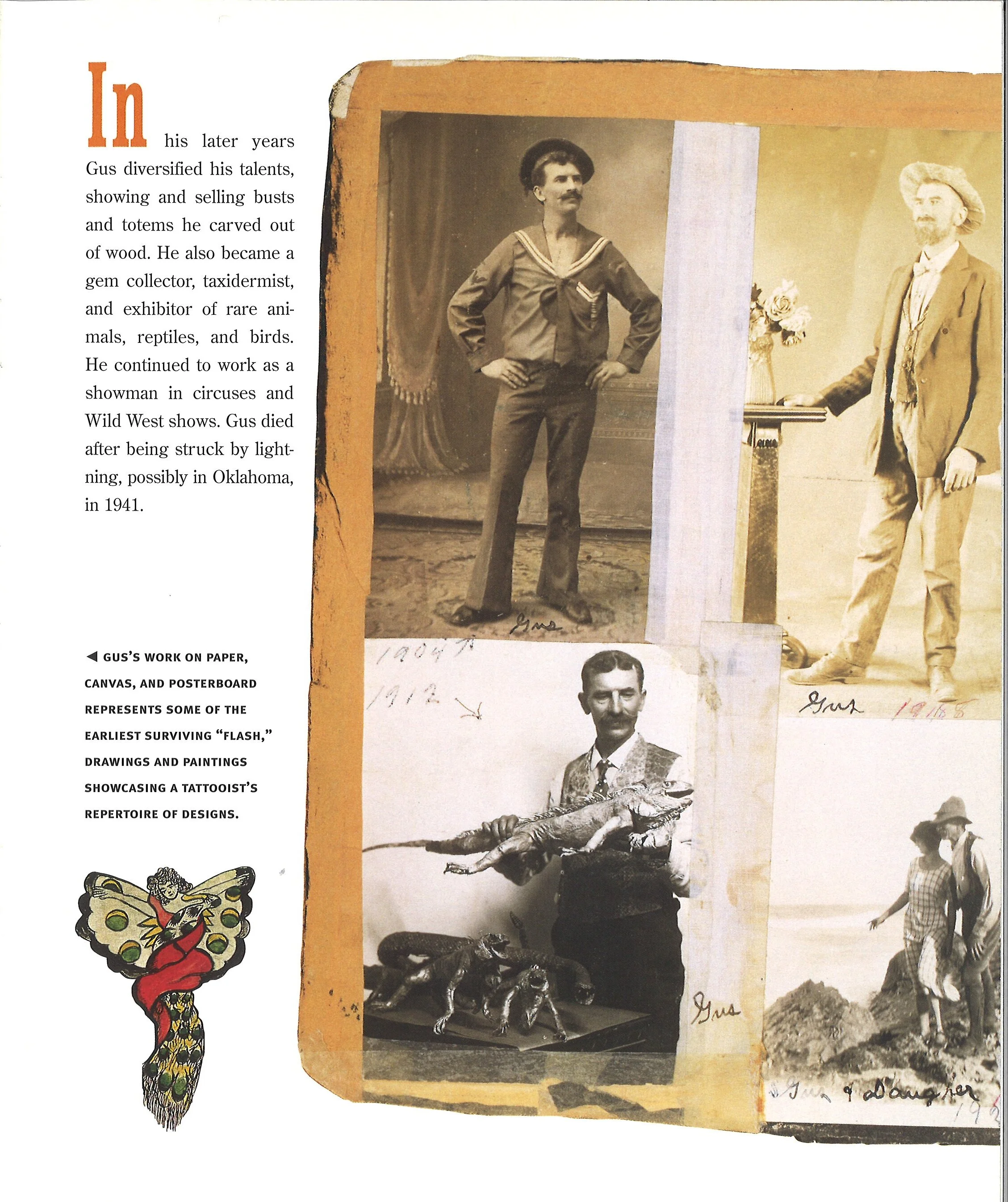
American Tattoo: The Art of Gus Wagner
South Street Seaport Museum, 2000
American Tattoo: The Art of Gus Wagner
When Alan Govenar and Kaleta Doolin donated their unique collection of tools, flash (tattoo designs), a scrapbook, and other ephemera originally belonging to the tattoo artist Gus Wagner (1872-1941) to the South Street Seaport Museum, it was only natural that we would create an exhibition to celebrate the occasion. Not only was Gus Wagner a character who seemingly stepped right out of the Grateful Dead’s U. S. Blues (“Shake the hand that shook the hand of P. T. Barnum and Charlie Chan”), he was also a transitional figure in the history of American tattooing, having learned a hand-held technique that became rare in an era when New Yorker Samuel O’Reilly pioneered the electric tattooing pencil.
The unlikely and exotic story of Gus’s experiences—as a merchant seaman sailing around the world, a tattooed man, a husband who tattooed his wife, and a traveling carnival performer—came to life through artifacts, images, and the feisty design fashioned for him by Linda Weinraub. I also wrote the booklet that accompanied the exhibition, several pages of which are shown here. Gus Wagner’s amazing story is presented vividly in The Alan Govenar and Kaleta Doolin Tattoo Collection at the South Street Seaport Museum, New York.
Alan Govenar is currently compiling a new book on the life and work of Gus Wagner, based on the materials in The Alan Govenar and Kaleta Doolin Tattoo Collection at the South Street Seaport Museum, New York.








